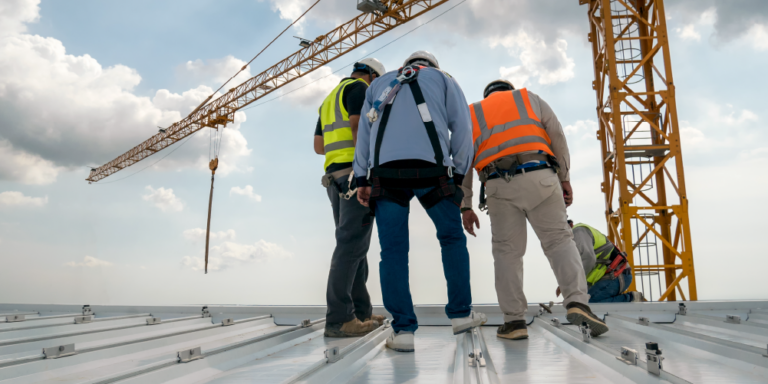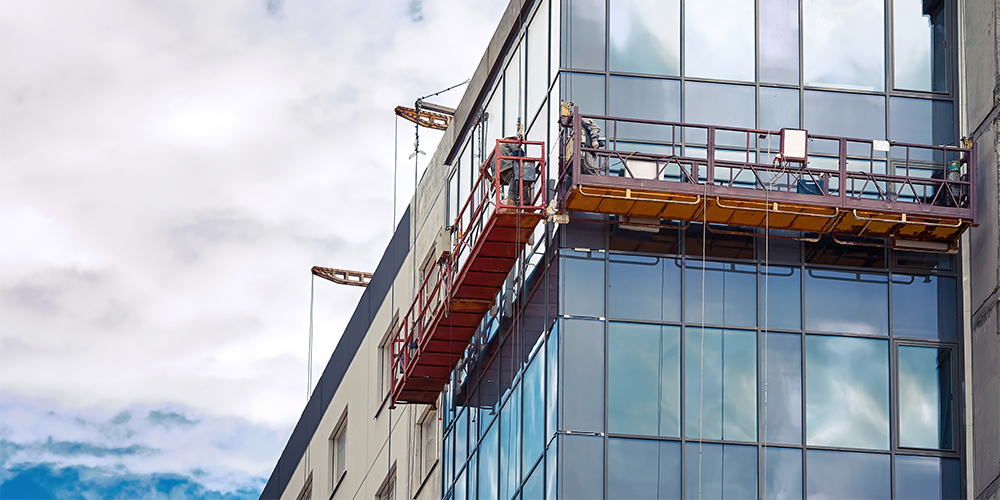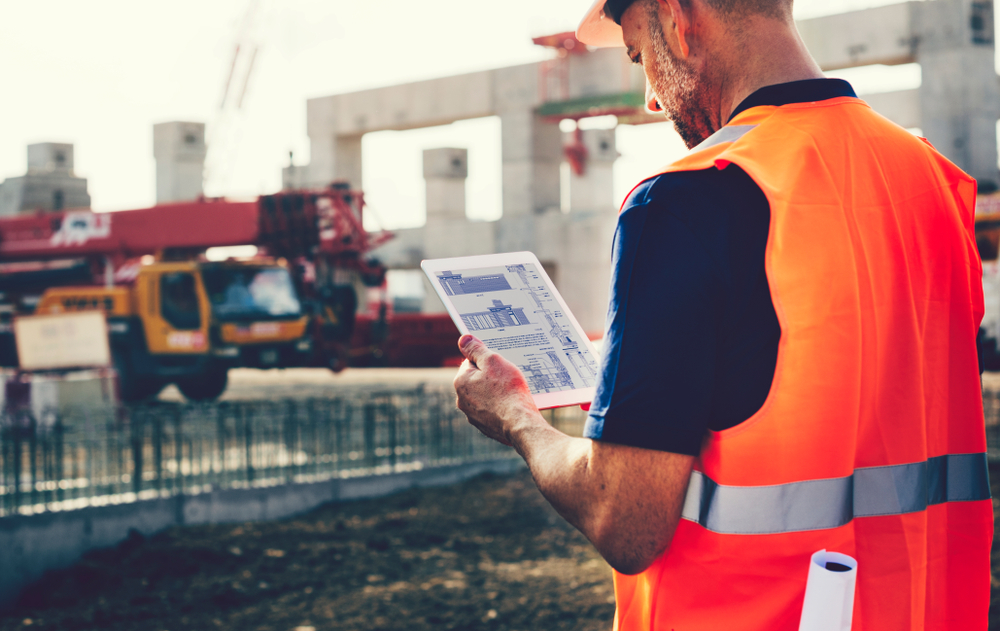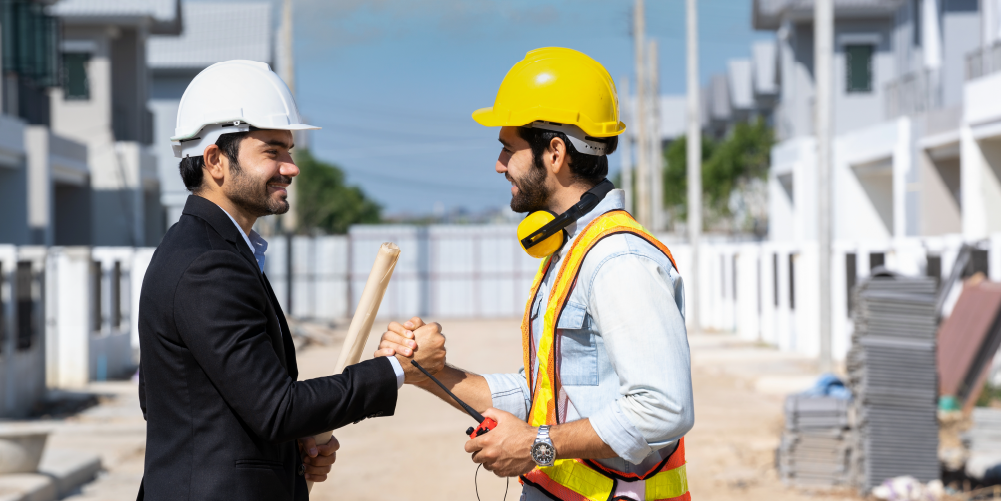— 14 min read
Commercial Roof Inspections: Common Issues & Best Practices


Last Updated Jun 6, 2024

Ryan Nash
Ryan Nash is a Field Team Leader at RNGD, delivering safe, efficient, and quality commercial construction projects in greater Nashville. Since he joined the company as Superintendent, he has successfully delivered multiple $100M+ projects on schedule and within budget. Throughout his 10+ years in the industry, he has developed a cost-saving mindset, expertise in navigating complex challenges, and commitment to a safety-first construction site. Ryan holds a Bachelor of Science degree in construction management from Southeast Missouri State University. He lives in Nashville.

James Hamilton
Writer & Producer
85 articles
James Hamilton is a writer based in Brooklyn, New York with experience in television, documentaries, journalism, comedy, and podcasts. His work has been featured on VICE TV and on The Moth. James was a writer and narrator for the show, VICE News Tonight, where he won an Emmy Award and was nominated for a Peabody Award.
Last Updated Jun 6, 2024

A commercial building’s ability to fulfill its intended purpose depends, in large part, on a roof that keeps the outside out and the inside safe and dry. A commercial roof inspection is one of the best ways to ensure a roof can do that.
Commercial roof inspections occur throughout the life and construction of a roof to check that it has been installed correctly, matches what’s in the building plans, and hasn’t been damaged.
In this article, we will explore the basics of commercial roof inspections, from what they focus on, common issues found at them, and how to make the most of them.
Table of contents
Commercial roof inspections proactively identify problems.
Roofs are one of the most essential parts of a building, but they can also be one of the most complicated and expensive to repair. Commercial roof inspections seek to detect problems before they become bigger issues. This usually saves money and time by allowing the building to continue to be used or constructed. For contractors and manufacturers, a commercial roof inspection is a crucial part of assessing whether they feel confident offering warranties that will last for years and influence the likelihood they earn return business.
By the time moisture is detected inside a building, it is often the symptom of a larger, sprawling problem that can be extremely challenging to understand and address. Commercial roof inspections are an important part of avoiding these problems and, when they do arise, finding lasting and cost-effective solutions.
Roof Inspections During Project Closeout
Roof inspections have important implications for the closeout process. Most jurisdictions don’t list a roof inspection as a requirement for obtaining a certificate of occupancy (CO). However, many parts of a building that must be inspected to obtain a CO – such as electrical, insulation, or mechanical systems – can’t be completed unless a roof inspection has verified that a building is enclosed, secure, and will remain dry.
How explicitly a roof inspection is involved in closeout depends on the location. Some cities, such as Rochester, NY, instruct inspectors to look at the roof as part of the building’s final inspection. Other governments, such as Denver, go further and require roof inspections by the local building authority to obtain a CO.
Regardless of where a building is, closeout documents almost always require roof warranties from manufacturers and workmanship warranties from contractors.
Types of Commercial Roof Inspections
Oftentimes, the phrase “roof inspection” refers to an examination of a completed roof, either after it’s newly constructed or as maintenance throughout its life. However, many types of roof inspections are meant to ensure a roof is built properly and can withstand the elements for as long as possible.
Pre-roof
Before installing a roof, a general contractor usually assesses the condition of a structure. This inspection typically involves walking the building and checking that the substrate, whether it’s concrete, wood, steel, or something else, is constructed correctly and will be able to support and attach to whatever type of roof is going to be installed.
First in-place/mockup roof inspection
This inspection is usually completed by a GC or a manufacturer’s rep as soon as the roofing contractors install the first part of the roof. The inspection helps ensure that the manufacturer’s directions are being followed in the early stages of installation and that mistakes and discrepancies are fixed early, avoiding replication in the rest of the roof.
Routine
These informal but necessary inspections happen daily, or multiple times a day, throughout the construction process. GCs usually monitor the roof as it is built, focusing on newly installed sections or elements such as a drain or an HVAC unit.
Routine inspections are particularly important after a storm, since that’s an easier time to detect areas that aren’t sealed, have leaks, or are showing warning signs such as pooling water.
Discovering these issues during construction offers a chance to address them as soon as possible, before having to consider how to deal with all the variables of a completed roof.
Post-construction/final
A post-construction roof inspection happens after a roofer’s work is complete. It usually involves a GC and manufacturer completing a rigorous check of every part of the roof to ensure it was installed correctly and has no issues or warning signs of future issues.
Both contractors and manufacturers offer warranties, and this inspection is a way for them to feel confident that the work and product is up to their standards and something they can stand by. For general contractors, post-construction inspection is important for ensuring that the rest of the building’s construction can continue with a roof that keeps systems and materials safe and dry.
For roofing contractors, a post-construction inspection often represents the culmination of their work, and passing can be attached to receiving final payments.
Emergency
An emergency inspection is often conducted in response to moisture being detected inside the building and, in turn, usually focuses on determining the source of the water and the route it took from the roof to where it was detected.
Water always takes the path of least resistance, which is often not a straight path, so finding where it penetrated the roof and how it made its way inside can become a painstaking and complicated process that can sometimes reveal even more issues that were out of sight.
Periodic
After being constructed, roofs should be regularly inspected as a form of maintenance. Periodic inspections are a good time to clear debris, check equipment that might be installed on the roof, and identify concerns or damage while they are still relatively new and easy to fix.
Depending on the building’s use, the materials used, and its environment, some owners will work to catch issues as soon as possible by conducting regular informal periodic inspections themselves. However, many commercial building owners hire a professional inspector to conduct the assessment, as they are more likely to know what to look for and what to do if issues arise.
Periodic inspections are conducted a few times a year, at the very least in the spring to check for damage from the winter and again in the fall to make sure the building is ready to handle harsher conditions. The best practice is to inspect roofing after any severe weather, such as hail or high winds, has cleared to check for damage or debris.
Learn more: Contractor’s Guide to Jobsite Inspections
Who conducts a roof inspection?
The entity that conducts a commercial roof inspection usually depends on what point they are at in the construction process and whether an issue has already been detected.
General Contractors
Most inspections are led by the GC, including the pre-roof, first in-place, periodic, and the final roof inspections. GCs want to make sure the roof is something they feel confident providing a warranty for and that they are able to proceed with the rest of construction.
Manufacturer’s Reps
Manufacturers will usually have representatives they send to conduct inspections throughout the construction process. These reps are often part of the first in-place and post-construction inspection, but can also be sent to do periodic inspections on behalf of the manufacturer.
Inspections completed by reps are often free, as they’re included in the purchase of the roof and because it’s usually in the best interest of the manufacturer to ensure installation is done correctly. General contractors doing inspections will often ask the rep to join, as they usually have more familiarity with the building materials and experience addressing common issues.
Third-party Inspectors
Third-party consultants are sometimes called in to complete impartial, and often very specialized, commercial roof inspections, especially if a contractor finds a detail during their own inspections with which they are unfamiliar or that seems inconsistent.
A third-party inspection can cost anywhere from a few thousand to tens of thousands of dollars, depending on the size of the roof and the urgency of the inspection.
However, paying to fix issues later that could have been caught by an inspector will usually cost many times more than the inspection ever would have.
Commercial vs. Residential Roof Inspections
Lives, resources, and a building’s structural stability depend on effective roof inspections, regardless of the building type. Similarly, the aim of any roof inspection is almost always the same, whether it’s on a skyscraper or a single-family home: to ensure the roof is keeping the building secure and dry and, if not, to detect problems as early as possible.
Many differences between the types of roof inspections have to do with the different natures of the roofs themselves. Commercial roofs are more likely to be larger, flat, and have equipment installed on them. This can mean a commercial roof inspection might take longer and require assessing more variables.
The biggest difference between commercial and residential roof inspections usually happens after construction, when the owner is working to maintain a completed roof. The shapes and materials used for residential roofs often make it easier for an owner to handle periodic inspections themselves.
Commercial roof inspections often need to be completed by a professional inspector, as they can require assessing larger spaces and sometimes more complicated equipment.
The Roof Inspection Process
Each type of roof inspection looks different. For example, a general contractor conducting a periodic construction inspection might focus on checking fasteners installed since their last walkthrough.
For the section below, we will focus on what happens at the post-construction roof inspection, as it gives a complete picture of all that needs to be considered when inspecting a commercial roof.
Walk the roof
Contractors should walk the roof from one end to another, maybe more than once. They are almost always checking that the installation followed the building plans and any manufacturer recommendations, which could include installing additional fasteners in specific places or how to finish edges. Walking the roof is the best time to look for warning signs of future problems or to identify abnormalities. We will cover things to look for and common issues in the sections below.
Check penetrations
A roof penetration is any point where a hole was made to install equipment, which can include drains, air conditioners, plumbing stack vents, ducts, exhaust fans, skylights, or HVAC curbs. Because they involve creating an opening in the roof, penetrations are often at the highest possible risk to develop leaks, tears, or punctures.
Infrared imaging
Many inspections will start with infrared scans, which can be used to check for moisture that isn’t immediately visible to the eye. For example, an infrared camera might reveal moisture that has already permeated into the layers under the roof.
Water changes temperature faster than the material around it. Infrared scans reveal those temperature discrepancies, which can lead to discovering water buildups. Because of this, infrared is best used when the temperature outside is changing, either in the morning as the roof heats up or in the evening as the building cools down. Conversely, infrared will not provide helpful results after a large storm or a cleaning where the whole roof received a lot of moisture.
Core Samples
A core sample is a small portion of the roof removed to reveal the make-up of the materials underneath the part of the roof that’s visible. These can be used to find the number of layers, the materials used, and their conditions. Core samples are not always necessary, especially if contractors have been monitoring progress throughout installation.
However, core samples can help determine if insulation is wet when a leak is suspected, or when someone is conducting a periodic inspection on a completed building and wants to learn about the roof’s makeup and current condition.
Commercial Roof Inspection Checklist: What To Check
The main thing being evaluated during an inspection, specifically ones that occur during or right after construction, is whether the installation was done according to the manufacturer’s directions and the designer’s plans. In most cases, it is best practice to check that elements are in the right place, are securely attached, and don’t have excess moisture.
We will highlight common issues below, but here is a list of things to check during an inspection:
- Penetrations, including:
- Pitch pockets
- Expansion joints
- Crickets
- Valleys
- Drainage, including:
- Roof edges
- Base flashings
- Seams
- Fasteners (including screws and rivets)
- Exterior walls
- Substrate firmness
- Interior (including ceilings and walls)
- Installed equipment, such as:
Stay updated on what’s happening in construction.
Subscribe to Blueprint, Procore’s free construction newsletter, to get content from industry experts delivered straight to your inbox.

Common Issues Found During a Commercial Roof Inspection
Roof inspectors look for items that appear out of the ordinary or could suggest the roof will develop problems in the future. Here are a few issues to look for:
- Cracks, bulges, or valleys: These could indicate structural movement.
- Ponding water: These are water deposits that are stagnant or unable to drain. These can suggest any number of issues, such as blocked drainage, roof shrinkage, or incorrect roof pitching.
- Rust and corrosion: Corrosion suggests excess moisture and the weakening of parts of the roof.
- Punctures, cracks, and tears: These become points of entry into the building for water. These types of issues might be caused by issues such as weather, wear and tear, or an accident with equipment.
- Debris, dirt, or anything else that causes damage, gets stuck on the roof, or blocks drainage.
- Biological growth: Plants, algae, moss, fungi, or lichen, which often require water to grow and can suggest moisture build-ups. These can also lead to blocked drainage systems and, in extreme cases, can damage the structure.
- Shrinkage: If the membrane around a roofing material shrinks, it can leave the material vulnerable to cracks, rips, and tears.
- Clogged drainage: Look for any clogs in gutters or downspouts.
How to Prepare for a Commercial Roof Inspection
There are a few guidelines that will almost always make a roof inspection more effective.
Identify issues ahead of time.
Before beginning, an inspector should identify any leaks or points where water has been found in the interior of the building. If this has occurred, they will likely begin by attempting to find how the water got in and the route it’s taking from the roof to where it was detected, which can be a challenging and long process.
Make sure the roof is dry.
For an infrared inspection to be effective, the roof needs to be as dry as possible so the camera can detect inconsistencies.
Clear the roof.
The roof should be free of debris or clutter, including leaves. These elements make it hard to detect larger issues such as blocked drainage, or other issues such as punctures.
Clear drainage.
Gutters and roof drains should be as clear as possible to help give a clear view of how these systems are actually working. For example, leaves in a gutter might give the impression that it’s clogged, whether or not that’s the case.
What happens if an issue is discovered during a commercial roof inspection?
How to address any issue with a roof usually depends on two main factors: the type of issue and when it was discovered.
The roofing contractor is usually responsible for fixing any issues discovered during a post-construction work inspection before their work is considered complete — including receiving final payment. Another GC and manufacturer’s rep will usually conduct another inspection to ensure the issue is addressed.
Issues discovered during periodic inspections after a building is complete usually become a question of warranties. Third-party consultants can help owners understand:
- The nature of the issue
- If their warranties are still in effect
- If the issue is related to workmanship, which could be covered by contractors’ warranties
- Whether the issue is related to material, which should be covered by the manufacturer’s warranty
Addressing an issue almost always starts with working to pinpoint the cause and whether it’s an isolated incident. Roof problems are uniquely urgent and can also be expensive to fix, so solutions are usually determined by identifying the least invasive and effective option between repairing, restoring, or replacing the roof.
The More Inspections, The Better
A commercial roof inspection should lead to issues being resolved or the owner having an understanding of the parts of the roof that might be vulnerable to damage in the future. From there, it’s up to the owner to monitor and maintain the roof’s condition.
Conducting routine, informal roof inspections, such as having someone walk the roof, and periodically having third-party inspectors conduct formal inspections, can extend the life of the roof and, in turn, the building.
Was this article helpful?
Thank you for your submission.
100%
0%
You voted that this article was . Was this a mistake? If so, change your vote
Scroll less, learn more about construction.
Subscribe to The Blueprint, Procore’s construction newsletter, to get content from industry experts delivered straight to your inbox.
By clicking this button, you agree to our Privacy Notice and Terms of Service.
Thank you!
You’re signed up to receive The Blueprint newsletter from Procore. You can unsubscribe at any time.
Categories:
Written by

Ryan Nash
Ryan Nash is a Field Team Leader at RNGD, delivering safe, efficient, and quality commercial construction projects in greater Nashville. Since he joined the company as Superintendent, he has successfully delivered multiple $100M+ projects on schedule and within budget. Throughout his 10+ years in the industry, he has developed a cost-saving mindset, expertise in navigating complex challenges, and commitment to a safety-first construction site. Ryan holds a Bachelor of Science degree in construction management from Southeast Missouri State University. He lives in Nashville.
View profile
James Hamilton
Writer & Producer
85 articles
James Hamilton is a writer based in Brooklyn, New York with experience in television, documentaries, journalism, comedy, and podcasts. His work has been featured on VICE TV and on The Moth. James was a writer and narrator for the show, VICE News Tonight, where he won an Emmy Award and was nominated for a Peabody Award.
View profileExplore more helpful resources

Preparing for Post-Construction: A Guide to the Final Phase of a Project
Large construction projects often take years to plan, more years to design, and even more years to build. From the groundbreak point of view, it’s often difficult to see the...

A Guide to Construction Commissioning
During project closeout, an owner wants to receive any documents, training and warranties needed to take over the management and maintenance of their building. But they also want assurance that...

Construction Handover: Keys to an Efficient Process
After the months or years it takes to complete a construction project, the handover process begins. Project handover is the final part of the construction process, where a project, along...

Construction Closeout Documents: What’s Included & Why
Few parts of the building process can feel as stressful and as complicated as closeout: the multi-step, final phase of construction in which a project is prepared to be handed...
Free Tools
Calculators
Use our calculators to estimate the cost of construction materials for your next project.
Templates
Find a template to help you with your construction project tasks.
Material Price Tracker
Get the latest U.S. retail prices and view historical trends for common building materials.
Glossary
Explore key terms and phrases used in the industry.
